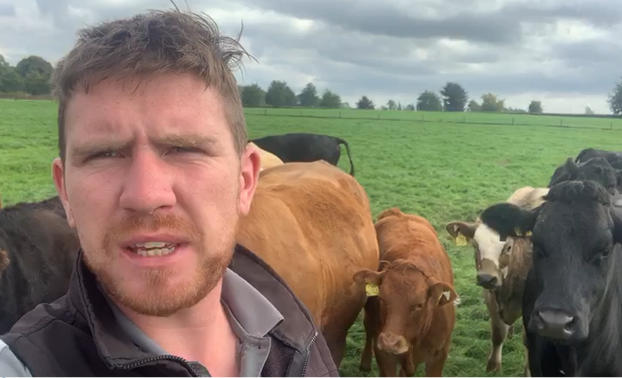
https://ec.europa.eu/eip/agriculture/en/find-connect/projects/bovine-beef-innovation-network-europe
 Click here to see the video
Click here to see the video
Challenge was to reduce calving difficulties and improve genetic performance in the herd. Previously stock bulls had proven to be unreliable and infertile resulting in significant economic losses in the herd.
In the herd of 100 suckler beef cows, a switch was made from using stock bulls to using AI in order to increase genetic performance, reduce calving difficulties and guarantee that all cows were in calf. The herd is made up of Charolaise, Limousine and Simmental cross cows. AI sires are selected using ICBF (Irish Cattle Breeding Federation) data so as no sire has a calving difficultly above 8%. All sires selected are proven sires, with a lot of data available.
The main benefits were an improvement in genetic gain by the use of superior genetics, reduction in calving difficulties, increase in value of progeny especially in-calf heifers which were sold for a premium of €220 per heifer, increase in average daily gain with young bulls at 1.3 to 1.35kg/head/day.
Heat detection in the cows was the main challenge. Moo-call technology was used to assist heat detection. Additional work load arose from assembling the cows every day for AI during the breeding season. Achieved 70% conception rate in the first 3 weeks and 93% after 11 weeks showed the success of the implementation. AI provides fast genetic gain in the herd and enables the farmer to address specific issues like calving difficulties quickly.
Artificial Insemination enables for increased farm income from improved performance!
This Good Practice has an Impact on:
- Socio-economic resilience: Improved farm income. Increase in value of female replacement animals sold of an average of €220 per head compared to beef heifers.
- Animal health and welfare: Reduced calving difficulties with a resulting saving in veterinary costs.
- Production efficiency and meat quality: Increased genetic improvement in the herd resulted in improved carcass conformation grades and meat yield of the progeny. Increased feed conversation rate and average daily gain.
- Increased genetic gain and technical efficiency as well as output reduced the carbon footprint of the herd.
Hier klicken, um den Artikel auf Deutsch zu lesen.